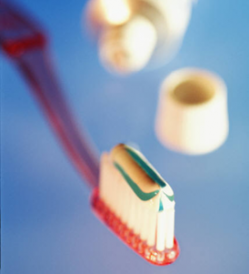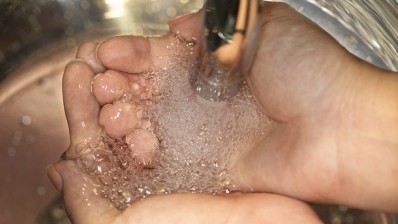Triclosan concern spreads to Asia...

The Customs Department in Hong Kong has launched an investigation into the same toothpaste the US FDA had found to contain triclosan just last week.
As evidence and awareness of the potential hazards associated with Triclosan grows, the chemical is causing a stir in the West and now the East.
In the US, Minnesota state legislatures voted to outlaw the ingredient in May of this year making it the first State to do so, and a move that many view as the beginning of the end for its use in many cosmetic and personal care products.
However, the chemical is not currently banned in Hong Kong. According to council chief executive Gilly Wong Fung-han, there was yet to be any scientific evidence that the drug is hazardous to human health.
Triclosan safety is not straight forward
Bloomberg reported on Monday that the FDA released 35 pages of documents from Colgate that summarised toxicology studies on triclosan, which is used to stave off gum disease.
A Hong Kong customs spokesman said it would will look into the report, and seek advice from the Department of Health on safety concerns.
Under the Consumer Goods Safety Ordinance, it is an offence to supply, manufacture or import into the city consumer goods unless they comply with "general safety requirements", the spokesman said.
The maximum penalty for the offence is a fine of HK$100,000 and imprisonment of one year on first conviction.
Colgate’s application to have its Total formulation approved by the US FDA 17 years ago included 35 pages of summarized toxicology studies which were withheld from view, the investigative report points out, while also stressing that Colgate cannot be accused of wrongdoing.
However, the information was later made public following lawsuit pressure that cited the Freedom of Information Act, and the information has been available on the FDA website since January of this year, which outlines the approval process for the formulation.




![Latest developments from the South Korean beauty market. [Getty Images]](/var/wrbm_gb_food_pharma/storage/images/_aliases/wrbm_tiny/publications/cosmetics/cosmeticsdesign-asia.com/headlines/brand-innovation/korea-focus-able-c-c-kolmar-and-more-in-this-k-beauty-round-up/17357973-1-eng-GB/Korea-focus-Able-C-C-Kolmar-and-more-in-this-K-beauty-round-up.jpg)

![Able C&C has furthered its partnership with Japanese discount chain Daiso with new makeup launch. [A'pieu]](/var/wrbm_gb_food_pharma/storage/images/_aliases/wrbm_tiny/publications/cosmetics/cosmeticsdesign-asia.com/headlines/brand-innovation/a-pieu-and-daiso-launch-exclusive-2-makeup-line/17339117-1-eng-GB/A-pieu-and-Daiso-launch-exclusive-2-makeup-line.jpg)
![Down Under Enterprises is setting sights on the Asian market as environmental sustainability and traceability become increasingly important. [Getty Images]](/var/wrbm_gb_food_pharma/storage/images/_aliases/wrbm_tiny/publications/cosmetics/cosmeticsdesign-asia.com/headlines/market-trends/down-under-enterprises-shifts-focus-to-china-as-environmental-sustainability-traceability-come-into-the-spotlight/17304932-1-eng-GB/Down-Under-Enterprises-shifts-focus-to-China-as-environmental-sustainability-traceability-come-into-the-spotlight.jpg)
![News updates from Shiseido, Dr.Ci:Labo, Sephora, and more. [Shiseido]](/var/wrbm_gb_food_pharma/storage/images/_aliases/wrbm_tiny/publications/cosmetics/cosmeticsdesign-asia.com/headlines/brand-innovation/updates-from-shiseido-dr.ci-labo-sephora-and-more/17334944-1-eng-GB/Updates-from-Shiseido-Dr.Ci-Labo-Sephora-and-more.jpg)

![Clariant has underscored the importance of localisation strategies and distribution capabilities in China with beauty trends evolving at a rapid pace. [Getty Images]](/var/wrbm_gb_food_pharma/storage/images/_aliases/wrbm_tiny/publications/cosmetics/cosmeticsdesign-asia.com/article/2024/04/16/clariant-emphasises-importance-of-localisation-in-the-era-of-viral-trends/17327969-1-eng-GB/Clariant-emphasises-importance-of-localisation-in-the-era-of-viral-trends.jpg)
